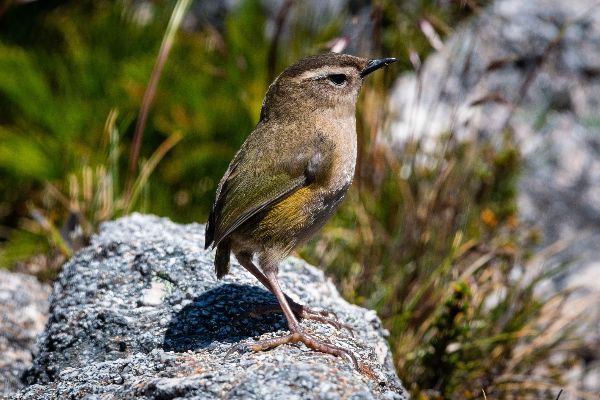New Survey Shows Rock Wren Hot Spots
Counting dainty rock wrens/tuke is tricky but a new survey is revealing where this threatened alpine bird is hanging on in the South Island mountains.

Rock wrens/tuke live year-round in the harsh alpine environment. No bigger than a silvereye, they are weak flyers and nest on the ground, making them easy prey for rats and stoats.
The Department of Conservation (DOC) began monitoring rock wrens at 22 sites from Fiordland to Kahurangi in 2019 to measure how populations respond to predator control. Two summer surveys have been completed.
DOC lead researcher Tristan Rawlence says results are showing healthy rock wren/tuke populations largely only where predators are managed.
“For the first time we’re getting an overall picture of how rock wrens are doing and it’s looking good where predators are controlled, but dire where they’re not.
“We’re seeing good numbers of rock wrens at the 12 sites under predator control using aerial 1080 and traps, mostly in the southern South Island.
“They are also doing well at sites in Westland where there is podocarp and hardwood forest, rather than beech, and different predator dynamics at play.
“In the northern South Island, we found fewer birds and none at sites north of Lewis Pass in the Spencer Mountains and Victoria Range where they were previously,” says Tristan Rawlence.
The healthiest rock wren populations were found in the upper Hollyford valley, Harris Saddle on the Routeburn Track, Haast Range, and several sites in Westland located between the Taramakau and Paringa rivers.
Smaller numbers of rock wrens/tuke were counted in Kahurangi National Park where it seems the 2019 mega beech mast and resulting stoat plague may have had an impact on the population there, despite widespread predator control.
At each monitoring site, field researchers walk along a series of fixed lines (each 250m) counting all rock wrens/tuke seen and heard. It sounds easy but the small birds are hard to spot among the rocks and have a high-pitched call, which can be difficult to hear.
DOC tested this survey method against other standard bird monitoring methods in a study on rock wrens from 2012-2018, which was published in the international journal Plos One. It was important to validate this new method for rock wrens to ensure monitoring was scientifically robust.
Community groups and other organisations are also contributing to rock wren/tuke surveying in some areas, such as the Matukituki Charitable Trust and Aspiring Biodiversity Trust in Mount Aspiring National Park, Te Manahuna Aoraki in Aoraki/Mount Cook National Park and Friends of Cobb in Kahurangi National Park.
Air New Zealand provides DOC with sustained pest trapping and species monitoring support across six Great Walks, including 10,347 ha in the Routeburn, which provides benefit to a range of native species, including rock wrens.
The rock wren/tuke monitoring is part of DOC’s Tiakina Ngā Manu predator control programme. Results will inform future predator management for recovery of this species and track population trends over time.


 GNS Science: Bioshields Could Help Slow Tsunami Flow
GNS Science: Bioshields Could Help Slow Tsunami Flow Transport and Infrastructure Committee: Inquiry Into Ports And The Maritime Sector Opened
Transport and Infrastructure Committee: Inquiry Into Ports And The Maritime Sector Opened Netsafe: Netsafe And Chorus Power Up Online Safety For Older Adults
Netsafe: Netsafe And Chorus Power Up Online Safety For Older Adults RBNZ: 10 Cent Coin With King Charles III Image Now In Production
RBNZ: 10 Cent Coin With King Charles III Image Now In Production NZALPA: Safety Improves From AKL Incident Learnings
NZALPA: Safety Improves From AKL Incident Learnings NIWA: Antarctic Footprint Clean-up Challenges - How A Remote Antarctic Base Clean-up Protected One Of Earth’s Clearest Lakes
NIWA: Antarctic Footprint Clean-up Challenges - How A Remote Antarctic Base Clean-up Protected One Of Earth’s Clearest Lakes


